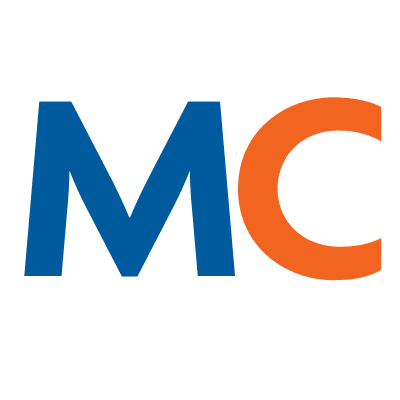- Solutions
- Solutions
- Home Health
- Hospice
- Life Plan Community
- Palliative Care
- Private Duty
- Senior Living
- Skilled Nursing
- Skilled Nursing
- Skilled Nursing Software
- Advanced Insights
- Customer relationship management
- Data and analytics
- Financial & operations management
- Marketing
- Nutrition management
- Referral management
- Regulatory compliance
- Retail management
- Resident engagement
- Revenue cycle management
- Skilled nursing interoperability
- Partners
- Blogs
- Resources
- About
- User Conference

What does patient engagement really mean?
What does patient engagement really mean?
We’ve all heard the phrase patient engagement. It’s abuzz in the home care industry, with organizations transforming entire strategies to better engage patients and their families. But what is it exactly and why is it important in our industry today?
Patient engagement in home health and hospice
While many think patient engagement is simply having the ability to text with patients or their family caregivers, that’s an undersell of what it truly is—or what it has the potential to be and do for home-based care organizations.
Patient engagement in home health and hospice is a fundamental shift that reflects a patient-centered approach. At its core, patient engagement is about involving individuals in their own care within the comforts of their home, empowering them to actively participate in decisions about their health and well-being.
It’s a collaborative relationship between patients, caregivers and healthcare providers, fostering open communication, trust, and shared decision-making. This translates to equipping patients with the knowledge, tools, and support to take an active role in their care journey. This includes setting health goals, adhering to care plans, and understanding their medical conditions.

Patient engagement is simplified authorization
When the power of attorney (POA) is not near the patient, but they need to authorize care, engaging them should be easy. Likewise, organizations shouldn’t rely on manual methods of communication when obtaining provider signatures. In an instant, care teams should be able to electronically send a form, POAs or providers should be able to sign it in real time, and then it should easily send back to the care team and integrate with the system of record.
Patient engagement is on-demand education
Teaching patients and caregivers how to use equipment, how to manage care between visits, and detailed information about diagnosis, drugs, and more no longer require care teams to make in-person visits. Instead, education materials are on demand, empowering patients and caregivers with 24/7 access to the knowledge needed to manage their care.
Patient engagement is less calling, more collaboration
When it comes to coordinating services—medical equipment deliveries, medication refills, scheduling home visits, and more—an all-in-one platform can help eliminate the need for phone calls, which means less playing phone tag and more engagement with patients and their loved ones.
Patient engagement is a population health model
By proactively engaging and gathering information from patients, organizations can step in when needed to provide better care. This is especially important during the staffing shortage, when many providers don’t have the bandwidth to manage all patients at once. Patient engagement tools give care teams an effective way to take care of patients.
Patient engagement is a bidirectional information exchange
Digital tools in home-based care are typically one-way communication. But when patients and their families have an open line of communication with their care teams, they can voice concerns and providers can then utilize available resources, escalate that need to the right person who can quickly help, and ultimately leave them with a satisfying experience. Simply put, it’s a feeling of security for patients and their families that someone’s there.

Patient engagement is an ecosystem of communication
Patient engagement tools go beyond just texting messaging or electronic signatures, it is an ecosystem of many tools that allow organizations to operate effectively with patients, providers, and family members. From electronic signature capture and video chatting to customized forms and on-demand education, there’s more than one way to communicate, capture data, and collaborate with everyone in the care journey.
Leveraging patient engagement technology or an electronic health record | EHR designed to support patient engagement, helps patients stay informed, connected and empowers them to take control of their health and care journey. The more you can include in this ecosystem, the more beneficial it is for the patient, ultimately improving outcomes and enhancing quality of care.
Are you ready to incorporate true patient engagement into your organization? Do you want to learn how our innovative technology is a game changer for patient and caregiver satisfaction, work-life balance among staff, and higher-quality care for patients?
See what MatrixCare can do for you
Rob Stoltz
Rob Stoltz, Sr Dir, Business Development Home and Hospice. A long time veteran in the home-based healthcare IT industry with deep experience in EMRs, care transitions, patient engagement, predictive analytics and interoperability. Most recently, Rob has been focused on technology partnerships leveraging interoperability to benefit all stakeholders involved with patient care while enhancing provider efficiency through effective workflows.
Related Posts



The Hospice FY 2025 Final Rule is released: What are next steps to be taken by hospices?
READ MORE >>
See MatrixCare in action
Start by having a call with one of our experts to see our platform in action.
MatrixCare offers industry-leading software solutions. Thousands of facility-based and home-based care organizations trust us to help them improve efficiency and provide exceptional care.
© 2025 MatrixCare is a registered trademark of MatrixCare. All rights reserved.




